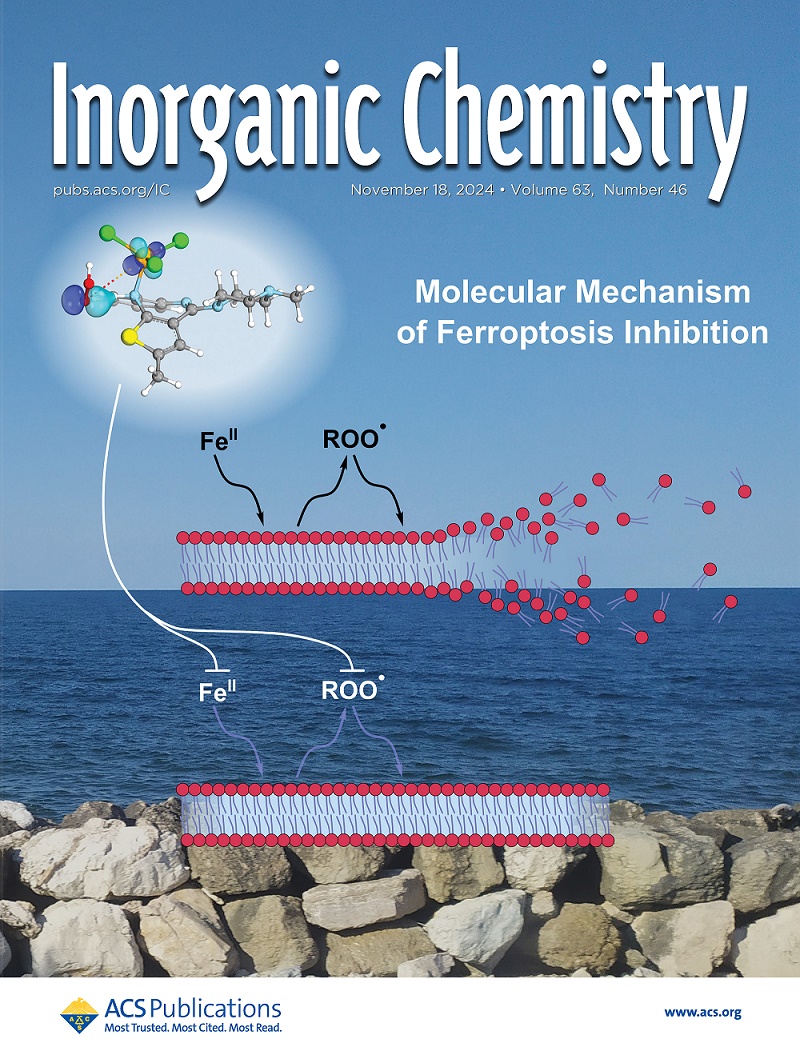A Precise Preparation Strategy for 2D Nanoporous Thulium-Organic Framework: High Catalytic Performance in CO2-Epoxide Cycloaddition and Knoevenagel Condensation
IF 4.7
2区 化学
Q1 CHEMISTRY, INORGANIC & NUCLEAR
引用次数: 0
Abstract
Efficient conversion of carbon dioxide (CO2) into high-value chemicals is viewed as one of the most promising approaches for solving the problem of an energy shortage and serious environment pollution. However, design and synthesis of confined multifunctional catalysts with in situ engineered task-specific sites and nanoporous environments remain a complex and challenging task due to a lack of in-depth understanding of their structure and reaction mechanism. Herein, we report a highly robust 2D nanoporous framework of {[Tm(HFPDC)(DMF)2]·DMF·H2O}n (NUC-120) (H4FPDC = 4,4′-(4-(4-fluorophenyl)pyridine-2,6-diyl)diisophthalic acid). The thermally activated host framework of [Tm(HFPDC)]n (NUC-120a) has the following two merits: (i) nanoporous structure, (ii) massive quantity of functional sites. Moreover, NUC-120 and activated NUC-120a display high thermal and chemical stability, which have been proved by TGA and the soaking experiments in acid–base water and most organic solvents. Catalytic experiments proved that NUC-120a, in the presence of the n-Bu4NBr cocatalyst could efficiently catalyze the coupling reaction of CO2 and epoxides under comparatively mild conditions. Furthermore, NUC-120a also displays high catalytic performance in the Knoevenagel condensation reactions of aldehydes and malononitrile, which should be because the coexisting Lewis acidic and basic sites can separately activate aldehyde and malononitrile molecules. Thereby, this work further provides insight that desired functional materials can be generated by using the existing suitable secondary building units (SBUs) and meticulously regulating the growth environments.

二维纳米多孔铥-有机框架的精确制备策略:二氧化碳-环氧化物环加成和克努瓦纳格尔缩合的高催化性能
有效地将二氧化碳转化为高价值化学品被认为是解决能源短缺和严重环境污染问题的最有前途的方法之一。然而,由于缺乏对其结构和反应机理的深入了解,设计和合成具有原位工程任务特异性位点和纳米孔环境的受限多功能催化剂仍然是一项复杂而具有挑战性的任务。在此,我们报道了一个高度稳健的二维纳米孔框架{[Tm(HFPDC)(DMF)2]·DMF·H2O}n (nucc -120) (H4FPDC = 4,4 ' -(4-(4-氟苯基)吡啶-2,6-二烷基)二对苯二甲酸)。热激活的[Tm(HFPDC)]n (NUC-120a)宿主骨架具有以下两个优点:(i)纳米孔结构;(ii)大量的功能位点。此外,通过热重分析和酸碱水及大多数有机溶剂的浸泡实验证明,NUC-120和活化后的NUC-120a具有较高的热稳定性和化学稳定性。催化实验证明,NUC-120a在n-Bu4NBr助催化剂存在下,可以在较温和的条件下高效催化CO2与环氧化物的偶联反应。此外,nucc -120a在醛与丙二腈的Knoevenagel缩合反应中也表现出较高的催化性能,这可能是由于共存的Lewis酸性和碱性位点可以分别激活醛和丙二腈分子。因此,这项工作进一步提供了通过使用现有的合适的二级建筑单元(SBUs)和精心调节生长环境来产生所需功能材料的见解。
本文章由计算机程序翻译,如有差异,请以英文原文为准。
求助全文
约1分钟内获得全文
求助全文
来源期刊

Inorganic Chemistry
化学-无机化学与核化学
CiteScore
7.60
自引率
13.00%
发文量
1960
审稿时长
1.9 months
期刊介绍:
Inorganic Chemistry publishes fundamental studies in all phases of inorganic chemistry. Coverage includes experimental and theoretical reports on quantitative studies of structure and thermodynamics, kinetics, mechanisms of inorganic reactions, bioinorganic chemistry, and relevant aspects of organometallic chemistry, solid-state phenomena, and chemical bonding theory. Emphasis is placed on the synthesis, structure, thermodynamics, reactivity, spectroscopy, and bonding properties of significant new and known compounds.
 求助内容:
求助内容: 应助结果提醒方式:
应助结果提醒方式:


